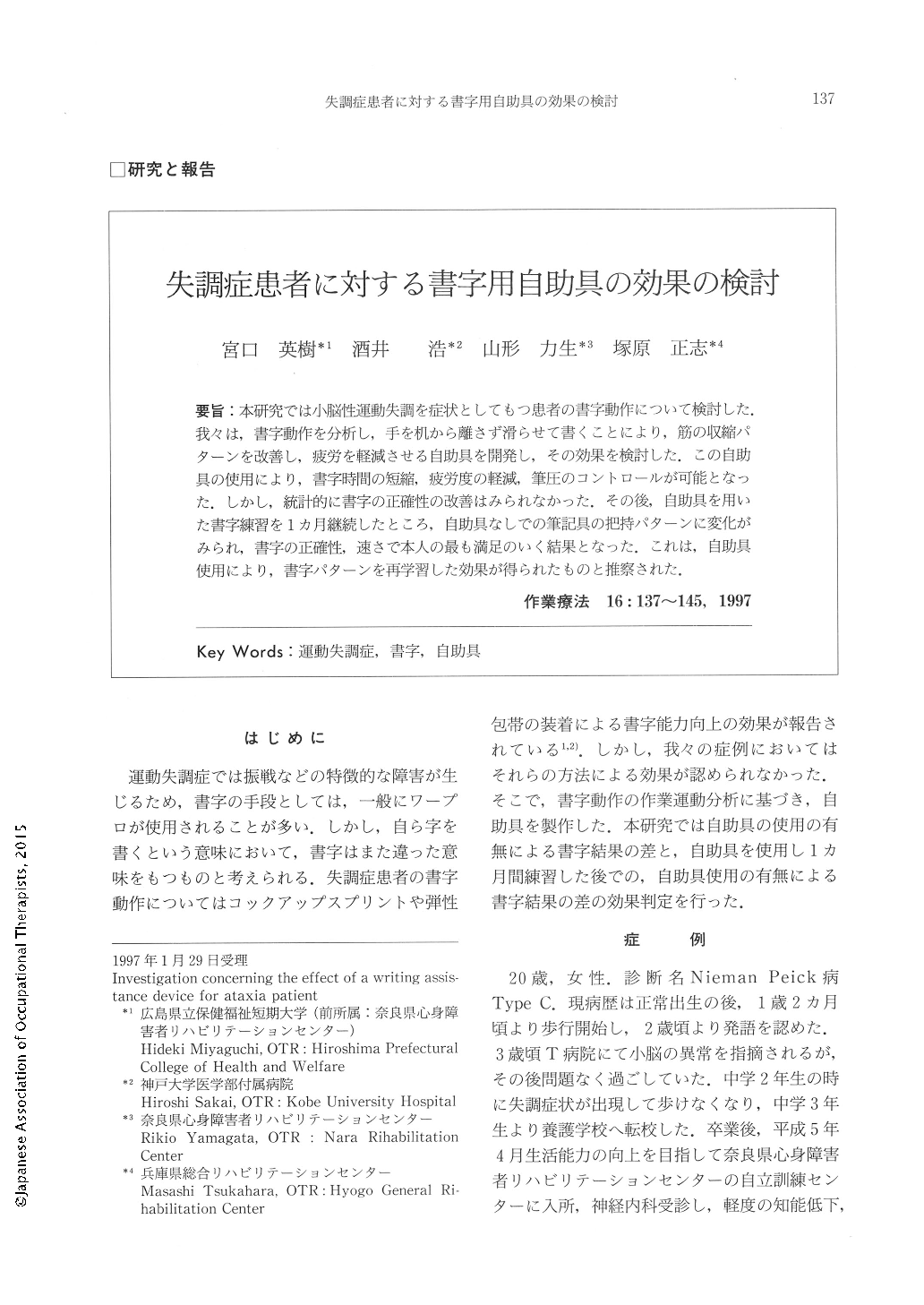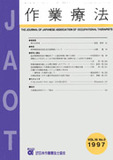Japanese
English
- 販売していません
- Abstract 文献概要
- 1ページ目 Look Inside
- 参考文献 Reference
- サイト内被引用 Cited by
要旨:本研究では小脳性運動失調を症状としてもつ患者の書字動作について検討した.我々は,書字動作を分析し,手を机から離さず滑らせて書くことにより,筋の収縮パターンを改善し,疲労を軽減させる自助具を開発し,その効果を検討した.この自助具の使用により,書字時間の短縮,疲労度の軽減,筆圧のコントロールが可能となった.しかし,統計的に書字の正確性の改善はみられなかった.その後,自助具を用いた書字練習を1カ月継続したところ,自助具なしでの筆記具の把持パターンに変化がみられ,書字の正確性,速さで本人の最も満足のいく結果となった.これは,自助具使用により,書字パターンを再学習した効果が得られたものと推察された.
This study investigated the writing movement of a patient who has symptoms of cerebella ataxia. We analyzed the writing movement of the patient and developed an assistance device, which enables the patient to move the arm without lifting it from and sliding on the desk. The purpose of this device is to improve the contraction pattern of the muscle and to improve the quality of writing as well as to shorten the writing time.
The effect of the device for writing was compared with hand writing on 1) quality, 2) writing time, 3) amendment value, 4) writing pressure, 5) gripping style and 6) feeling of satisfaction. The results showed that with the device the writing time was shortened, the writing pressure was controlled and the gripping style of the pen was changed. However, a qualitative improvement was not changed statistically.
Thereafter, the evaluation was made again after providing training in using the tool for one month; statistical improvements were then found both on the quality and the amendment value even without the tool, and also a change in gripping style was detected. The feeling of satisfaction of the patient herself was the highest. It was estimated that, by training in the use of the device, the writing pattern and gripping style were re-learnt, and the writing capability was improved.

Copyright © 1997, Japanese Association of Occupational Therapists. All rights reserved.


